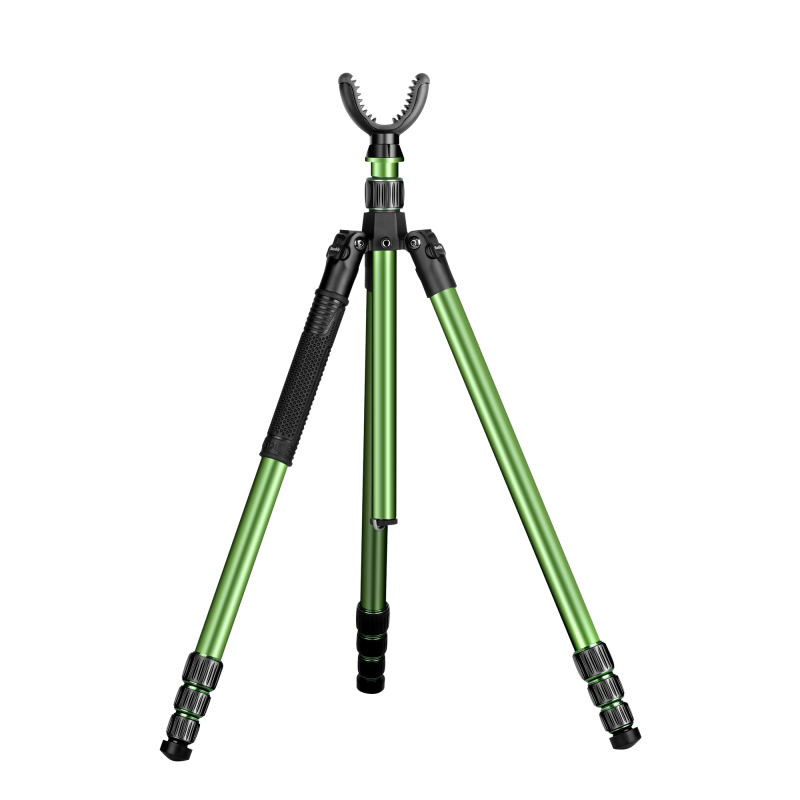Mastering the Art of Hunting Tripod Shooting
Whether you're a seasoned hunter or just starting out, mastering tripod shooting can revolutionize your hunting experience. This guide takes you through everything you need to know about shooting tripods, from selecting the right gear to understanding their benefits. Let's get started.
Essential Gear and Accessories for Tripod Shooting
Tips for Setting Up Your Hunting Tripod for Maximum Stability
Understanding the Importance of Height Adjustability in Shooting Sticks
Why Choose a Shooting Tripod?
A shooting tripod is one of the most important tools in a hunter's arsenal. It offers a stable platform which is crucial for accurate shots, especially during long-range hunting. Unlike traditional bipods or monopods, shooting tripods provide three points of contact with the ground, making them incredibly stable. This is particularly useful when hunting in rugged terrains where stability can be a concern. Tripods also allow for increased flexibility and maneuverability. They can be set up quickly and adjusted to various heights and angles, making them suitable for different shooting positions. Whether you're kneeling, sitting, or standing, a tripod can adapt to your needs. In addition, many modern tripods come with features like 360-degree rotation and quick-release mounts, making them even more versatile. Lastly, using a tripod can significantly reduce fatigue. Holding a rifle steady for extended periods can be exhausting, but a tripod takes that burden off your shoulders. This means you can focus more on aiming and less on maintaining stability, increasing your chances of a successful shot.
Essential Gear and Accessories for Tripod Shooting
When it comes to tripod shooting, having the right gear can make all the difference. First and foremost, you'll need a high-quality shooting tripod. Look for one that's made of durable materials like aluminum or carbon fiber. These materials are lightweight yet strong, providing a sturdy platform for your rifle. In addition to the tripod itself, there are several accessories that can enhance your shooting experience. A good-quality ball head or pan-tilt head is essential for smooth adjustments. These heads allow you to easily move your rifle in different directions, making it easier to track moving targets. Another useful accessory is a quick-release plate. This allows you to quickly attach and detach your rifle from the tripod, saving you valuable time in the field. Some tripods also come with built-in spirit levels, which help ensure your tripod is perfectly level, further enhancing stability. Don't forget about carrying cases and straps. A good carrying case will protect your tripod during transport, while straps make it easier to carry your tripod over long distances. Finally, consider investing in a shooting rest or saddle. These accessories provide additional support for your rifle, further enhancing stability and accuracy.
Tips for Setting Up Your Hunting Tripod for Maximum Stability
Setting up your hunting tripod correctly is crucial for achieving maximum stability. Start by choosing a flat, stable surface for your tripod. Uneven ground can cause your tripod to wobble, affecting your aim. If you're in uneven terrain, adjust the legs of the tripod to compensate, ensuring all three legs are firmly planted on the ground. Next, extend the legs of the tripod to the desired height. It's important to keep the center of gravity low, so avoid extending the legs fully if possible. Instead, extend the lower sections of the legs first, then adjust the upper sections as needed. This helps maintain stability by keeping the center of gravity closer to the ground. Once the legs are set up, attach your rifle to the tripod. Ensure it's securely fastened and won't come loose during shooting. Use the built-in spirit level to make sure your setup is perfectly level. If your tripod has a ball head or pan-tilt head, adjust it to the desired angle and lock it in place. Finally, test your setup by gently pushing on the tripod. It should remain stable and not wobble. If it does, make any necessary adjustments to the legs or head. Taking the time to properly set up your tripod will pay off with more accurate and consistent shots.
Understanding the Importance of Height Adjustability in Shooting Sticks
Height adjustability is a key feature of shooting tripods. It allows you to adapt to different shooting positions and terrains, ensuring you always have a stable platform for your rifle. Whether you're shooting from a prone, kneeling, sitting, or standing position, being able to adjust the height of your tripod ensures optimal stability and accuracy. Different hunting scenarios require different heights. For example, if you're shooting from a prone position, you'll need a low tripod. Conversely, if you're shooting from a standing position, you'll need a taller tripod. Height adjustability allows you to quickly and easily adapt to these different scenarios.
Mastering the art of hunting tripod shooting can significantly enhance your hunting experience. A shooting tripod offers unmatched stability, flexibility, and comfort, making it an essential tool for any serious hunter. By choosing the right gear, setting up your tripod correctly, and understanding the importance of height adjustability, you can take your hunting skills to the next level. If you're looking to elevate your hunting game, consider investing in a high-quality shooting tripod and accessories. Take the time to practice setting it up and using it in different scenarios. The more you practice, the more confident you'll become, and the more successful your hunts will be.

Comments
Post a Comment